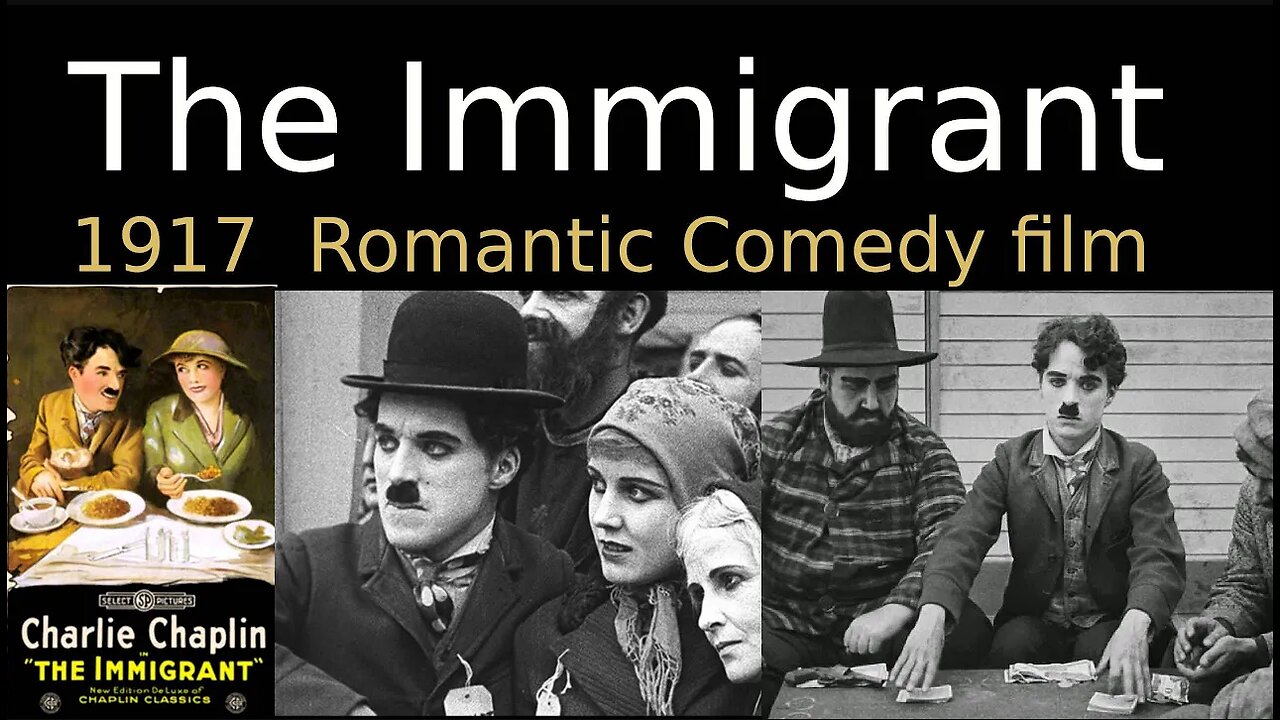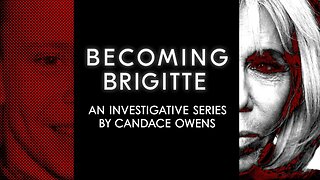Premium Only Content

The Immigrant (1917 Silent Romantic Comedy Short film)
The Immigrant is a 1917 American silent romantic comedy short. The film stars Charlie Chaplin's Tramp character as an immigrant coming to the United States who is accused of theft on the voyage across the Atlantic Ocean and falls in love with a beautiful young woman along the way. It also stars Edna Purviance and Eric Campbell.
The movie was written and directed by Chaplin.
According to Kevin Brownlow and David Gill's documentary series Unknown Chaplin, the first scenes to be written and filmed take place in what became the movie's second half, in which the penniless Tramp finds a coin and goes for a meal in a restaurant, not realizing that the coin has fallen out of his pocket.
It was not until later that Chaplin's Tramp was penniless because he had just arrived on a boat from Europe and used this notion as the basis for the first half. Purviance reportedly was required to eat so many plates of beans during the many takes to complete the restaurant sequence (in character as another immigrant who falls in love with Charlie) that she became physically ill.
The scene in which Chaplin's character kicks an immigration officer was cited later as evidence of his anti-Americanism when he was forced to leave the United States in 1952. In 1998, The Immigrant was selected for preservation in the United States National Film Registry by the Library of Congress as being "culturally, historically, or aesthetically significant."
Plot
The film begins aboard a steamship crossing the Atlantic Ocean and initially showcases an unnamed immigrant's misadventures, the Little Tramp (Chaplin), who finds himself in assorted mischief. The scene opens with Charlie bent double over the side of the ship, appearing to be seasick. Then it is revealed he is only fishing.
Much humor is derived from the heavy sway of the boat, with much sliding around the deck.
Charlie, among other things, plays cards, eats in the mess hall and avoids seasick passengers. Along the way, he befriends another unnamed immigrant (Purviance) who is traveling to America with her ailing mother. The two have been robbed by a pickpocket who loses the money to the Tramp in a card game. The Tramp, feeling sorry for the two penniless women, attempts to secretly place his winnings from his card game in the woman's pocket but ends up being mistakenly accused of being a pickpocket. The woman manages to clear the Tramp's name. Upon arrival in America, the passengers stare at the Statue of Liberty but once landed, the Tramp and the woman part company.
Cast
Charles Chaplin - Immigrant
Edna Purviance - Immigrant
Eric Campbell - The head waiter
Albert Austin - Seasick immigrant / A diner
Henry Bergman - The artist
Kitty Bradbury - The Mother
Frank J. Coleman - The cheater on the boat / Restaurant Owner
Tom Harrington - Marriage Registrar
James T. Kelley - Shabby Man in Restaurant
John Rand - Tipsy Diner Who Cannot Pay
This section does not cite any sources. Please help improve this section by adding citations to reliable sources. Unsourced material may be challenged and removed. (May 2021) (Learn how and when to remove this template message)
Episode 1 of the 1983 documentary series Unknown Chaplin reveals that Chaplin developed the storyline for The Immigrant as filming progressed. Initially, the movie began as a comedy set in an artists' cafe, with Purviance as a brightly dressed patron.
This plot was abandoned almost immediately, before Chaplin's character was introduced, the documentary states, and Chaplin began again, with a story, still set in a cafe, about a man who has never been in a restaurant before displaying terrible table manners before meeting a lovely girl (Purviance) and shaping up. Initially, Henry Bergman played the bully-ish head waiter, but Chaplin eventually replaced him with Eric Campbell.
According to Unknown Chaplin, Chaplin developed the idea of the tramp and Purviance's character being immigrants when he realized he needed more plot to justify the restaurant scenes. After filming the film's opening sequences of the arrival in America, he reshot parts of the restaurant scene to be consistent with the new plot (bringing Bergman back in a new role as an artist who resolves the subplot of Charlie being unable to pay for dinner), and added the epilogue in which the Tramp and Purviance are married.
Sound version
In 1932, Amedee Van Beuren of Van Beuren Studios, purchased Chaplin's Mutual comedies for $10,000 each, added music by Gene Rodemich and Winston Sharples and sound effects, and re-released them through RKO Radio Pictures. Chaplin had no legal recourse to stop the RKO release.
Reception
Like many American films of the time, The Immigrant was subjected to some cuts by city and state film censorship boards. The Chicago Board of Censors required two cuts to the film, the first being the closeup showing the stealing of a moneybag, and the second involving nose thumbing as an insult.
-
 20:11
20:11
Candace Show Podcast
1 hour agoBecoming Brigitte: Candace Owens x Xavier Poussard | Ep 6
45.9K147 -
 LIVE
LIVE
Dr Disrespect
6 hours ago🔴LIVE - DR DISRESPECT - ELDEN RING DLC - REVENGE
3,773 watching -
 1:01:52
1:01:52
In The Litter Box w/ Jewels & Catturd
23 hours agoBest Presidents' Day Ever! | In the Litter Box w/ Jewels & Catturd – Ep. 743 – 2/17/2025
70.1K49 -
 1:29:15
1:29:15
Simply Bitcoin
6 hours ago $6.51 earnedThey JUST Triggered A Global Gold Rush: $1M Bitcoin is coming! | EP 1184
68K23 -
 1:50:47
1:50:47
The Quartering
6 hours agoElon Musk's 13th Baby, Trump Attends Daytona 500, and Ramaswamy Enters the Ohio Governor's Race
91.2K35 -
 1:28:04
1:28:04
Russell Brand
6 hours agoBREAKING: UK Troops To Ukraine | Zelensky Wants “Army Of Europe” | JD Vance SLAMS EU Tyranny – SF538
164K50 -
 1:46:20
1:46:20
Benny Johnson
7 hours agoPANIC: Feds FLEE DC After Mass PURGE, Fired USAID Activists EXPOSED | Trump DOMINATES Daytona 500
153K156 -
 1:58:43
1:58:43
The Charlie Kirk Show
5 hours agoCBS Steps In It + Hockey Brawl + Judicial Standoff | Yoo, Schlapp, BigTree | 2.17.2025
147K42 -
 1:01:26
1:01:26
The Dan Bongino Show
8 hours agoTrump Is Cancelling DEI And Cancel Culture (Ep. 2424) - 02/17/2025
908K1.73K -
 1:06:12
1:06:12
Timcast
7 hours agoDemocrat Swamp IMPLODES, CBS Runs DAMAGE Control For Democrats, Gets ROASTED By Elon | Timcast LIVE
177K186